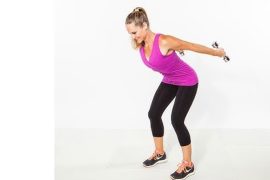Adjusting your walking pace is crucial for maximizing its benefits without overexertion. From brisk walking to a high pace, each form offers numerous advantages, including calorie burn, improved cardiovascular fitness, and enhanc efficiency. However, it’s essential to pay attention to your body and adjust your speed accordingly to avoid strain or injury.
Factors like posture, stride length, arm movement, and terrain can influence your walking pace. Gradually increasing speed over time, incorporating interval training, and staying hydrated are key strategies for safely boosting walking speed. By finding the right balance and listening to your body’s cues, you can enjoy the full benefits of walking while minimizing the risk of overdoing it.
- Focus on Posture: Maintain an upright posture with your shoulders relaxed, chest lifted, and gaze forward. Engage your core muscles to support your spine and maintain stability.
- Stride Length: Lengthen your stride slightly to increase your speed. However, avoid overstriding, which can lead to discomfort or injury. Find a comfortable balance between stride length and frequency.
- Arm Movement: Swing your arms naturally in sync with your stride. Bent elbows and vigorous arm movement can help propel you forward and increase your walking speed.
- Gradual Progression: Gradually increase your walking speed over time to allow your body to adapt. Start with small increments and gradually work your way up to a faster pace.
- Interval Training: Incorporate intervals of faster-paced walking into your routine. Alternate between periods of brisk walking and recovery at a slower pace to challenge your cardiovascular system and boost overall fitness.
- Use Terrain to Your Advantage: Incorporate hills or inclines into your walking route to naturally increase intensity and pace. Uphill walking engages different muscle groups and can help improve strength and endurance.
- Stay Hydrated and Listen to Your Body: Drink plenty of water before, during, and after your walk to stay hydrated. Pay attention to how your body feels and adjust your pace accordingly. If you feel fatigued or experience discomfort, slow down or take a break.
By implementing these tips and gradually increasing your walking speed, you can maximize the benefits of walking while minimizing the risk of overexertion. Remember to prioritize safety and listen to your body’s cues to ensure a rewarding and enjoyable walking experience.
Disclaimer:
The information contained in this article is for educational and informational purposes only and is not intended as a health advice. We would ask you to consult a qualified professional or medical expert to gain additional knowledge before you choose to consume any product or perform any exercise.







